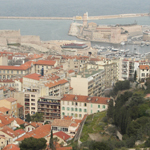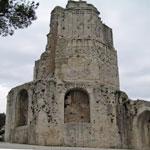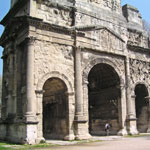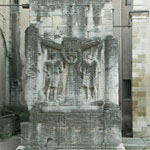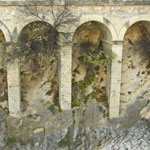
The Romans were on to something! As with so many parts of the ancient world, they colonized France (then Gaul), which was then and still is one of the most beautiful parts of their vast empire. Home to some of the most spectacular and best-preserved Roman buildings and monuments outside of Italy, Provence and adjacent areas of southern France are archaeologically rich in Roman sites and have the added benefit of providing delicious Provençal food and wine from nearby vineyards to the traveler sated by long days of exploring antiquity. In April 2007 my husband, Steve Morse, and I spent a couple of weeks in this delightful part of the world.
Jane C. Waldbaum is Professor Emerita of Art History at the University of Wisconsin-Milwaukee where she taught undergraduate and graduate courses on Greek, Roman, and Egyptian art history and archaeology for almost 30 years. A graduate of Brandeis University (1962), Jane earned her MA and PhD (1968) in Classical Archaeology from Harvard University, and has worked on archaeological excavations at Gezer and Ashkelon in Israel, at Gordion and Sardis in Turkey, at Idalion in Cyprus, and at Paestum in Italy. Her research interests include cultural and economic contacts among the ancient cultures of the Mediterranean region and she has written three books and numerous articles on this and other subjects.
Jane is the immediate Past President of the Archaeological Institute of America (AIA), serving as President from 2003 to 2007 and first Vice President from 1999 to 2003. She is currently President of the AIA's local society in Milwaukee. She has also served as a trustee of the American Schools of Oriental Research and of the W. F. Albright Institute of Archaeological Research in Jerusalem.
Click on the photos to begin your tour.
Advertisement

Advertisement




